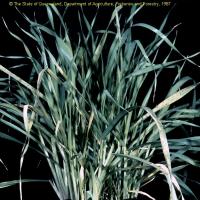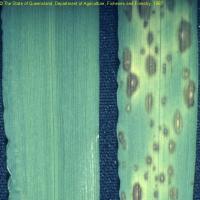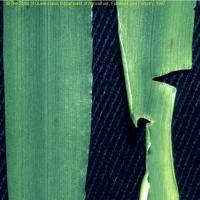Diagnosing boron deficiency in barley
Boron deficiency is rare in cereals in Western Australia (WA) and will impact broadleaf crops such as lupin and canola before affecting cereals like wheat and barley. Boron does not easily move around the plant therefore a deficiency is most likely to be seen in the younger tissues first.
What to look for
- Sandier more acidic parts of the paddock will be most affected.
Paddock
- Boron deficient barley is short and stunted with greyish-green foliage.
- Pale yellowing and/or dark brown irregular lesions first appear between the margin and mid-vein in the middle of young leaves. This extends rapidly to the leaf tip and irregular grey lesions develop between the margin and mid-vein and may join grey dead leaf margins.
- The whole tip dies but the base of affected leaves remains green.
- Youngest leaves may die or fail to develop, and the blade often tears, giving plants a ragged appearance.
- Poor grain set due to reduced pollen viability is a possible symptom that may appear even when there are no visual on leaves.
Plant
What else could it be
| Condition | Similarities | Differences |
|---|---|---|
| Diagnosing calcium deficiency in barley | Causes youngest leaf damage | Calcium deficiency doesn't have grey lesions and the young leaf tip twists, dies and often falls off |
Where does it occur?

Soil type
- Areas most at risk receive more than 600 millimetres (mm) annual rainfall and have sandy, acid soils - such as the sand plains of the Dandaragan plateau stretching from the West Midlands to the Eradu sandplain.
Management strategies

Spraying foliar

Soil application

- Soil or foliar applications of boron.
- Foliar applications act rapidly but timing of application is important to avoid irreversible damage.
- Soil applications generally last longer but can be leached from acidic, sandy soils. Be careful to avoid higher rates than necessary as these can cause boron toxicity in plants.
How can it be monitored?

Tissue test
- Use the youngest emerged blade (YEB) for plant testing.
- There is no plant calibration for WA, as field responses to boron fertiliser have not been measured. However at mid-tillering, YEB values below 2-4 milligrams per kilogram (mg/kg) are marginal, and values greater than 5-10 mg/kg indicate boron adequacy.
- There is no calibrated soil test for boron deficiency in barley. Soil testing may be useful on deep sands but on duplex soils subsoil boron levels should also be determined.
See also
Further information
Where to go for expert help
Page last updated: Monday, 20 April 2015 - 8:49am




